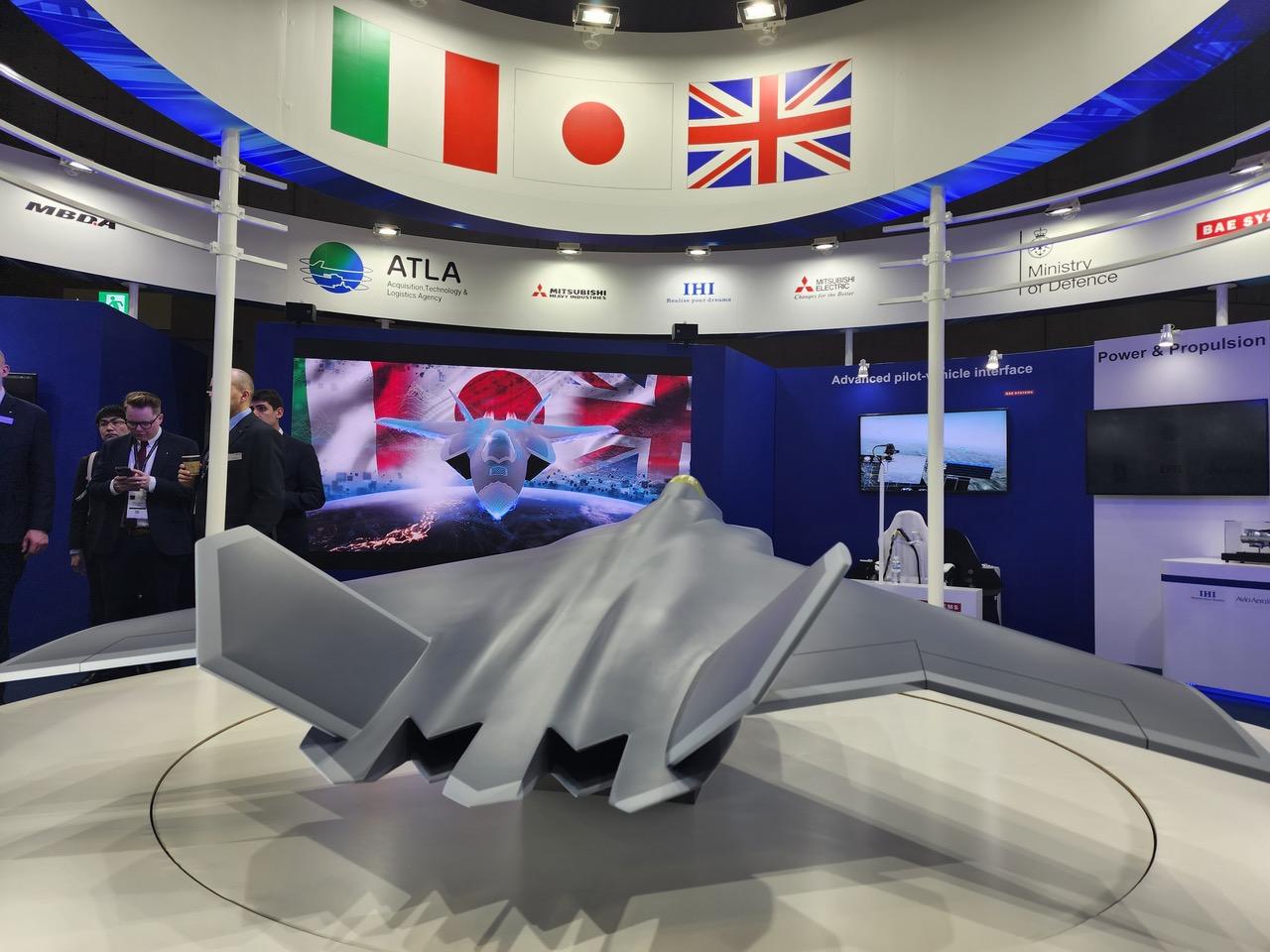
The GCAP concept model with revised engine nozzles on show at DSEI Japan 2023.
TOKYO—Japan’s Mitsubishi Electric, Leonardo UK and both Leonardo and Elettronica from Italy have announced their collaboration in the Global Combat Air Program’s (GCAP) Integrated Sensing and Non- Kinetic Effects & Integrated Communications Systems (ISANKE & ICS) electronic systems.
The collaboration will assess appropriate commercial and international operating models as the GCAP team works toward finalizing the aircraft’s requirements and design. GCAP partners Japan, Italy and the UK aim to put the aircraft into service by 2035.
Aerospace DAILY understands the companies will study ways to move forward in the coming months as they look for more agile ways to develop future electronics and radar systems in a compressed timeframe.
“The next milestone this year is the agreement of the system’s requirements,” UK Defense Secretary Ben Wallace said at a keynote address at the DSEI conference here. “And I will add my own air force to make sure that the requirements are common amongst all three air forces and kept consistent. 2025 is the development phase and the flying phase is towards the end of the decade or early 2030s.”
The GCAP concept model displayed at DSEI features a revised engine exhaust, with a low-observable design likened to that found on the F-22. Aerospace DAILY understands the design was derived based on requirements from the three nations.
Separately, the three GCAP manufacturers have shared their vision to design the aircraft via modern digital-transformation technologies such as computer modeling, cloud-based computing and simulation, as well as data analytics.
“Digital capability will be the most important enabler of the GCAP program,” BAE Systems GCAP Managing Director Herman Claesen said at the conference. He said that, based on the experience of model-based design on the Tempest program, engineers have been able to identify design errors before the parts are built. It has been estimated that such methods could significantly reduce development cost and achieve 40% in time savings.
Moreover, with an eight-hour time difference between the UK and Japan, development can continue 24 hr. per day as the project is passed back and forth digitally, thus increasing productivity.
Claesen’s Italian counterpart, Guglielmo Maviglia, said Leonardo will use its Davinci-1 super computer in the development of GCAP models. He said the supercomputer is able to shorten computer testing that would usually take four hours to 30 sec.
Maviglia explained that since the partners will be working with a similar tool set, the other two companies will be investing heavily in areas of computing power to de-risk any potential shortfall in computing capabilities.





